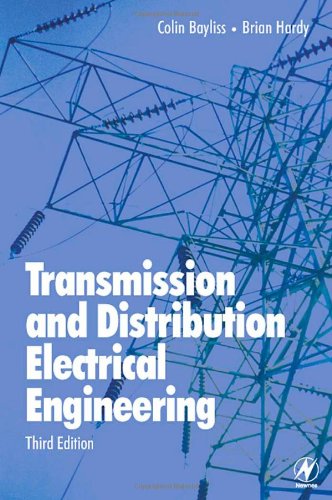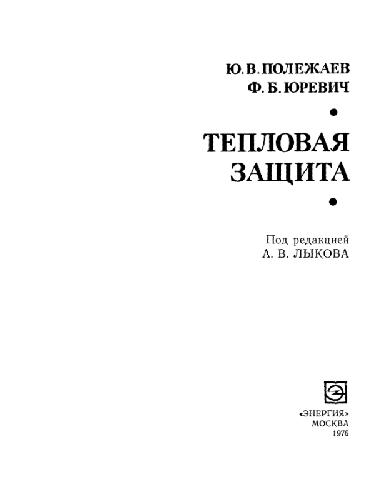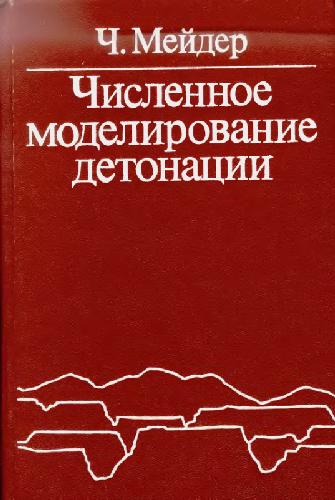Colin Bayliss, Brian Hardy0750666730, 9780750666732, 9780080468136
Table of contents :
Front Cover……Page 1
Transmission and Distribution Electrical Engineering……Page 4
Copyright Page……Page 5
Contents……Page 6
About the authors……Page 22
Contributors……Page 24
Preface……Page 28
1.2.1 Purpose……Page 30
1.2.2 Sample study……Page 31
1.3.1 Introduction……Page 37
1.3.2 Analytical aspects……Page 39
1.3.3 Steady state stability……Page 43
1.3.4 Transient stability……Page 46
1.3.5 Dynamic stability……Page 57
1.3.6 Effect of induction motors……Page 58
1.3.7 Data requirements and interpretation of transient stability studies……Page 59
1.3.8 Case studies……Page 64
1.4.2 Sample study……Page 71
2.2 Block diagrams……Page 79
2.3.1 Method of representation……Page 80
2.4.1 Combined wiring/cabling diagrams……Page 84
2.4.2 British practice……Page 90
2.4.3 European practice……Page 93
2.4.4 Other systems……Page 96
2.5 Computer aided design (CAD)……Page 97
2.7 Graphical symbols……Page 98
Appendix A: Relay identification – numerical codes……Page 100
Appendix B: Comparison between German, British, US/Canadian and international symbols……Page 111
B1 General circuit elements……Page 112
B2 Operating mechanisms……Page 115
B3 Switchgear……Page 118
3.2.1 Security of supply……Page 121
3.2.3 Maintainability……Page 122
3.2.7 Land area……Page 123
3.3.1 Single busbar……Page 124
3.3.2 Transformer feeder……Page 126
3.3.3 Mesh……Page 130
3.3.4 Ring……Page 132
3.3.5 Double busbar……Page 133
3.3.6 1½ Circuit breaker……Page 134
3.4.1 Introduction……Page 136
3.4.2 Safety clearances……Page 137
3.4.3 Phase–phase and phase–earth clearances……Page 138
4.2.1 Battery and charger configurations……Page 144
4.2.2 Battery charger components……Page 147
4.2.3 Installation requirements……Page 150
4.2.4 Typical enquiry data – DC switchboard……Page 154
4.3.2 Battery capacity……Page 155
4.3.3 Characteristics of batteries……Page 156
4.3.4 Battery sizing calculations……Page 159
4.3.5 Typical enquiry data……Page 162
4.4.1 Power sources……Page 164
4.4.3 Auxiliary transformer LV connections……Page 166
4.4.5 Typical enquiry data……Page 168
4.4.6 Earthing transformer selection……Page 169
4.4.7 Uninterruptible power supplies……Page 173
5.2.2 Protection CT classifications……Page 178
5.2.3 Metering CTs……Page 182
5.2.4 Design and construction considerations……Page 183
5.2.5 Terminal markings……Page 185
5.3.2 Electromagnetic VTs……Page 186
5.3.3 Capacitor VTs……Page 187
5.4 Future trends……Page 188
6.2.1 Polymeric and resin materials……Page 192
6.3.1 Post insulators……Page 193
6.3.3 Long rod……Page 197
6.4.1 Environment/creepage distances……Page 198
6.4.2 Remedial measures……Page 201
6.4.3 Calculation of specific creepage path……Page 202
6.5.2 Design characteristics……Page 203
6.6.2 Technical particulars……Page 209
7.2.1 Terminology……Page 210
7.2.2 Internal lighting……Page 215
7.2.3 External lighting……Page 216
7.2.4 Control……Page 226
7.3 Distribution characterization……Page 228
7.4.1 Air circulation……Page 229
7.4.2 Air-conditioning……Page 231
7.5.1 Introduction……Page 236
7.5.3 Access, first aid and safety……Page 237
7.5.4 Fire detection……Page 238
7.5.5 Fire suppression……Page 241
7.5.6 Cables, control panels and power supplies……Page 242
8.2.1 Touch and step voltages……Page 244
8.2.2 Touch and step voltage limits……Page 245
8.3.1 Environmental conditions……Page 248
8.3.2 Earthing materials……Page 251
8.3.3 Earth resistance and earth potential rise……Page 254
8.3.4 Hazard voltage tolerable limits……Page 256
8.4 Computer simulation……Page 258
References……Page 261
9.2.1 Power frequency voltage……Page 262
9.2.2 Overvoltages……Page 263
9.3.1 Air……Page 274
9.4.1 The IEC standard approach……Page 277
9.4.2 Statistical approach……Page 278
9.5.1 Rod or spark gaps……Page 280
9.5.2 Surge arresters……Page 282
References……Page 297
10.1 Introduction……Page 298
10.2.3 Impedance earthed systems……Page 299
10.2.5 Network arrangements……Page 300
10.3.1 Discrimination by time……Page 303
10.3.4 Unit protection……Page 304
10.3.5 Signalling channel assistance……Page 305
10.4.2 Inverse definite minimum time lag (IDMTL) relays……Page 306
10.4.4 Plotting relay curves on log/log graph paper……Page 309
10.4.5 Current relay application examples……Page 310
10.5.1 Biased differential protection……Page 321
10.5.2 High impedance protection……Page 324
10.5.3 Transformer protection application examples……Page 325
10.5.4 Pilot wire unit protection……Page 329
10.5.5 Busbar protection……Page 332
10.6.1 Introduction……Page 335
10.6.3 Relay characteristics……Page 336
10.6.4 Zones of protection……Page 342
10.6.5 Switched relays……Page 343
10.6.6 Typical overhead transmission line protection schemes……Page 344
10.7.1 Tripping and auxiliary……Page 348
10.7.3 Timers……Page 352
10.7.5 Underfrequency……Page 354
10.8.1 Basic input data……Page 355
10.8.4 Relay settings……Page 357
10.9.1. Introduction……Page 358
10.9.2. Main substation protection……Page 359
10.9.3. Traction system protection……Page 360
10.9.4. 21 kV distribution system and protection philosophy……Page 361
10.9.5. 21 kV pilot wire unit protection……Page 363
10.9.6. 21 kV system back-up protection……Page 364
10.10.1 Background……Page 366
10.10.2 Developments……Page 367
References……Page 369
11.2.1 Types and standards……Page 370
11.2.3 HRC fuses……Page 374
11.2.4 High voltage fuses……Page 377
11.2.5 Cartridge fuse construction……Page 384
11.3.2 Discrimination……Page 386
11.3.3 Cable protection……Page 389
11.3.4 Motor protection……Page 391
11.4.1 Operation……Page 392
11.4.2 Standards……Page 396
11.4.3 Application……Page 397
References……Page 402
12.2 Codes and standards……Page 403
12.3.1 General design criteria……Page 406
12.3.2 Cable construction……Page 407
12.3.3 Submarine cables……Page 415
12.3.4 Joints and terminations……Page 417
12.4.1 Introduction……Page 418
12.4.3 Cables laid direct in ground……Page 419
12.4.4 Cables laid in ducts……Page 424
12.4.5 Earthing and bonding……Page 425
12.4.6 Short circuit ratings……Page 427
12.4.7 Calculation examples……Page 429
12.5.1 Dielectric losses……Page 439
12.6.2 Toxic and corrosive gases……Page 440
12.6.3 Smoke emission……Page 441
12.6.5 Flame retardance/flammability……Page 442
12.6.6 Fire resistance……Page 443
12.7.1 Low voltage and multicore control cables……Page 444
12.7.2 Telephone cables……Page 445
12.7.3 Fibre optic cables……Page 446
12.8.1 Standard cable laying arrangements……Page 452
12.8.2 Computer aided cable installation systems……Page 455
12.8.3 Interface definition……Page 458
References……Page 464
13.2 Terminology and standards……Page 465
13.3.1 Basic principles……Page 467
13.3.2 Special switching cases……Page 479
13.3.3 Switches and disconnectors……Page 482
13.3.4 Contactors……Page 485
13.4.1 Introduction……Page 489
13.4.2 Sulphur hexafluoride (SF[sub(6)])……Page 492
13.4.3 Vacuum……Page 493
13.4.4 Oil……Page 497
13.4.5 Air……Page 499
13.5.1 Closing and opening……Page 501
13.5.3 Integral earthing……Page 506
13.6.1 12 kV metal-clad indoor switchboard example……Page 509
13.6.2 Open terminal 145 kV switchgear examples……Page 515
13.6.3 Distribution system switchgear example……Page 520
13.6.4 Distribution ring main unit……Page 521
References……Page 527
14.2.1 Basic transformer action……Page 528
14.2.2 Transformer equivalent circuit……Page 530
14.2.3 Voltage and current distribution……Page 532
14.2.4 Transformer impedance representation……Page 533
14.2.5 Tap changers……Page 535
14.2.6 Useful standards……Page 544
14.3.2 Voltage drop……Page 546
14.3.3 Impedance……Page 547
14.3.5 Voltage ratio with off-circuit tappings……Page 548
14.3.8 Vector groups and neutral earthing……Page 549
14.3.9 Calculation example to determine impedance and tap range……Page 552
14.4.2 Temperature rise……Page 561
14.4.3 Loss of life expectancy with temperature……Page 562
14.4.4 Ambient temperature……Page 563
14.4.6 Transformer cooling classifications……Page 564
14.4.7 Selection of cooling classification……Page 567
14.4.8 Change of cooling classification in the field……Page 568
14.4.9 Capitalization of losses……Page 569
14.5.1 Cores……Page 570
14.5.2 Windings……Page 571
14.5.3 Tanks and enclosures……Page 573
14.5.4 Cooling plant……Page 575
14.5.5 Low fire risk types……Page 576
14.5.7 Reactors……Page 578
14.6.2 Buchholz relay……Page 581
14.6.5 Temperature monitoring……Page 582
14.6.7 Miscellaneous……Page 583
14.6.8 Transformer ordering details……Page 585
References……Page 593
15.2 Soil investigations……Page 594
15.3 Foundation types……Page 595
15.4 Foundation design……Page 604
15.5.1 Setting out……Page 605
15.5.3 Piling……Page 606
15.5.4 Earthworks……Page 608
15.5.5 Concrete……Page 609
15.5.6 Steelwork fixings……Page 612
16.2 Routing objectives……Page 614
16.3.4 Ground soil conditions……Page 616
16.3.5 Wayleave, access and terrain……Page 617
16.3.6 Optimization……Page 618
16.4.1 Accuracy requirements……Page 620
16.4.2 Profile requirements……Page 621
16.4.3 Computer aided techniques……Page 622
17.1 Introduction……Page 624
17.2.2 Effect on tower or support design……Page 626
17.2.3 Conductor loads……Page 632
17.3.1 Lattice steel tower design considerations……Page 640
17.3.2 Tower testing……Page 652
17.4.1 Pole structures……Page 653
17.4.2 Tower structures……Page 654
References……Page 658
18.2 Environmental conditions……Page 659
18.3.1 General……Page 660
18.3.2 Types of conductor……Page 661
18.3.3 Aerial bundled conductor and BLX……Page 662
18.3.4 Conductor breaking strengths……Page 666
18.3.6 Corrosion……Page 668
18.4.1 Heat balance equation……Page 670
18.4.2 Power carrying capacity……Page 671
18.4.3 Corona discharge……Page 674
18.4.4 Overhead line calculation example……Page 678
18.5.1 Design spans……Page 680
18.5.2 Conductor and earth wire spacing and clearances……Page 693
18.5.4 Conductor tests/inspections……Page 703
18.6.1 Fittings related to aerodynamic phenomena……Page 704
18.6.2 Suspension clamps……Page 706
18.7.1 Inductive reactance……Page 707
18.7.3 Resistance……Page 709
18.8.3 Conductor selection on weight basis……Page 710
18.8.4 Conductor short circuit current capability……Page 713
18.8.5 Conductor support arrangements……Page 716
References……Page 721
19.1 Introduction……Page 722
19.2.1 Introduction……Page 723
19.2.5 Documentation and record systems……Page 725
19.3.1 Objectives……Page 727
19.3.3 Type tests……Page 728
19.4.1 Pre-commissioning and testing……Page 729
19.4.3 On-line inspection and testing……Page 730
19.5.1 Switchgear……Page 734
19.5.2 Transformers……Page 742
19.5.3 Cables……Page 747
19.5.4 Protection……Page 753
Appendix A: Commissioning test procedure requirements……Page 767
Appendix B: Drawings, diagrams and manuals……Page 768
20.1 Introduction……Page 770
20.2 Standards……Page 771
20.3 Compliance……Page 772
20.4.2 Magnetic field radiated emission measurements……Page 773
20.4.3 Electric field radiated emission measurements……Page 775
20.4.4 Conducted emission measurements……Page 777
20.4.5 Immunity testing……Page 778
20.5.3 The use of screen boxes and Faraday enclosures……Page 779
20.5.4 The use of screen floors in rooms……Page 781
20.6.2 Field strength calculations……Page 784
20.6.4 Attenuation factors……Page 785
20.7.1 Screening power cables……Page 786
20.7.2 Measurement of field strengths……Page 790
References……Page 792
21.2.1 Functions……Page 793
21.2.2 PLC selection……Page 794
21.2.3 Application example……Page 799
21.3.1 Introduction……Page 805
21.3.2 Power line carrier communication principles……Page 806
21.4.1 Introduction……Page 809
21.4.2 Typical characteristics……Page 812
21.4.3 Design issues……Page 814
21.4.4 Example (Channel Tunnel)……Page 815
21.5 Software management……Page 817
21.5.1 Software – a special case……Page 818
21.5.2 Software life cycle……Page 819
21.5.3 Software implementation practice……Page 822
21.5.4 Software project management……Page 825
References……Page 827
22.2.1 Introduction……Page 828
22.2.2 Financial assessment……Page 829
22.2.3 Economic assessment……Page 836
22.3.2 Cash flow……Page 840
22.3.4 Export credit agencies……Page 841
22.3.5 Funding risk reduction……Page 842
22.3.6 Use of private finance……Page 843
22.4.1 The project life cycle……Page 845
22.4.2 Cash flow……Page 846
22.4.3 Bonds……Page 848
22.4.4 Advance payments and retentions……Page 849
22.5.1 Time, cost and quality……Page 851
22.5.2 Basic types of contract……Page 852
22.5.3 Standard terms and conditions of contract……Page 854
22.5.4 Key clauses……Page 858
22.6.2 Estimating……Page 861
22.6.3 Tender evaluation……Page 863
22.7 Model forms of contract – exercise……Page 864
Appendix A: Project definition/questionnaire……Page 866
Appendix B: Bidding checklist……Page 892
23.2 Definitions……Page 896
23.2.1 Demand or average demand……Page 897
23.2.2 Maximum demand (MD)……Page 898
23.2.5 Load factor (LDF)……Page 899
23.2.6 Diversity factor (DF)……Page 900
23.2.7 Coincident factor (CF)……Page 901
23.2.9 Loss factor (LSF)……Page 902
23.2.11 Loss equivalent hours……Page 907
23.2.12 Peak responsibility factor (PRF)……Page 909
23.3.1 Users of load forecasts……Page 910
23.3.3 The micro load forecast……Page 911
23.3.4 The macro load forecast……Page 914
23.3.5 Nature of the load forecast……Page 915
23.4.1 Distribution feeder arrangements……Page 917
23.4.2 Voltage drop calculations……Page 918
23.4.4 Inductive reactance……Page 921
23.4.5 Economic loading of distribution feeders and transformers……Page 922
23.4.6 System losses……Page 923
23.5.1 Introduction……Page 925
23.5.2 Reliability functions……Page 926
23.5.3 Predictability analysis……Page 930
23.6 Drawings and materials take off……Page 935
24.1 Introduction……Page 936
24.2.2 Three phase harmonics……Page 938
24.3.2 Transformers……Page 939
24.3.4 The thyristor bridge……Page 940
24.3.5 Railway and tramway traction systems……Page 942
24.3.6 Static VAr compensators and balancers……Page 944
24.4.3 Resonances……Page 946
24.4.4 Interference……Page 948
24.5.1 Harmonic filters……Page 949
24.6.1 Introduction……Page 953
24.6.2 A physical description of ferroresonance……Page 954
24.6.4 Interharmonics……Page 957
24.7.1 The requirement……Page 958
24.7.2 The studies……Page 959
References……Page 960
25.2.1 Short-term interruptions and voltage dips and peaks……Page 962
25.2.3 Voltage flicker……Page 966
25.2.5 Voltage unbalance……Page 967
25.3.1 Energy storage……Page 968
25.3.3 Static VAr compensators……Page 969
25.4 Case study……Page 971
References……Page 973
26.2.1 Symbols……Page 974
26.2.2 Units and conversion tables……Page 975
26.3 Alternating quantities……Page 980
26.4 Vector representation……Page 983
26.5.1 The j operator……Page 988
26.5.2 Exponential vector format……Page 989
26.5.4 Algebraic operations on vectors……Page 990
26.6.1 Theoretical background……Page 991
26.6.2 Calculation methodology and approximations……Page 993
26.6.3 Interpretation……Page 994
26.7.2 Fundamental formulae……Page 995
26.7.3 Simplified network reduction example……Page 1000
26.8.1 Introduction……Page 1006
26.8.2 Technical problems……Page 1007
26.8.3 Loss reduction……Page 1011
26.8.4 Communication link gain or attenuation……Page 1019
26.8.5 Reactive compensation……Page 1020
26.8.6 Power factor correction calculation procedures……Page 1023
References……Page 1027
B……Page 1030
C……Page 1031
E……Page 1032
H……Page 1033
L……Page 1034
P……Page 1035
R……Page 1036
S……Page 1037
T……Page 1038
Z……Page 1039







Reviews
There are no reviews yet.